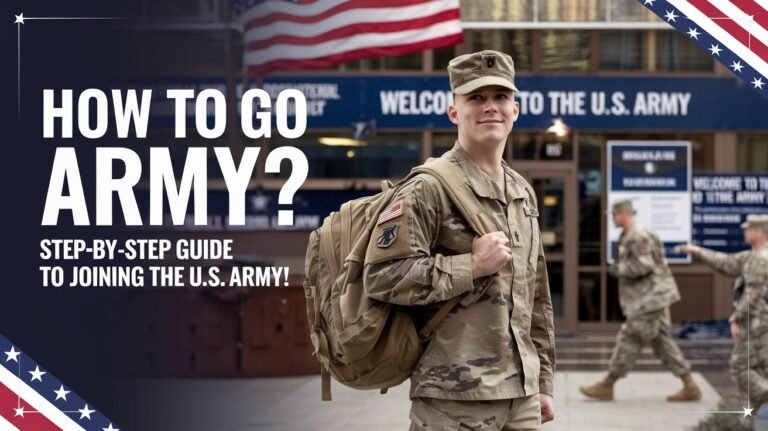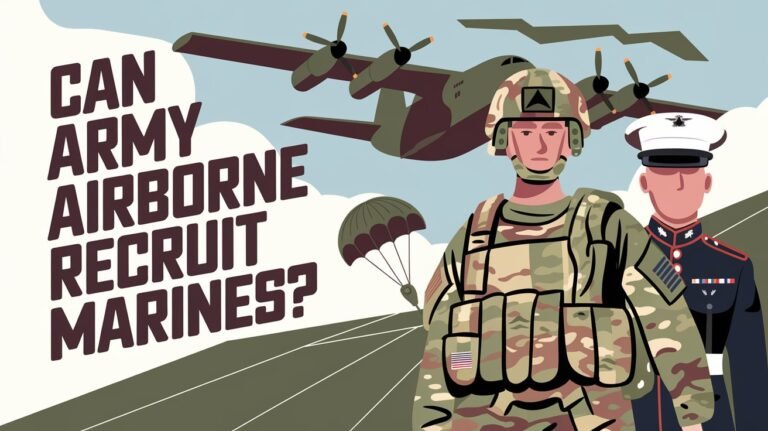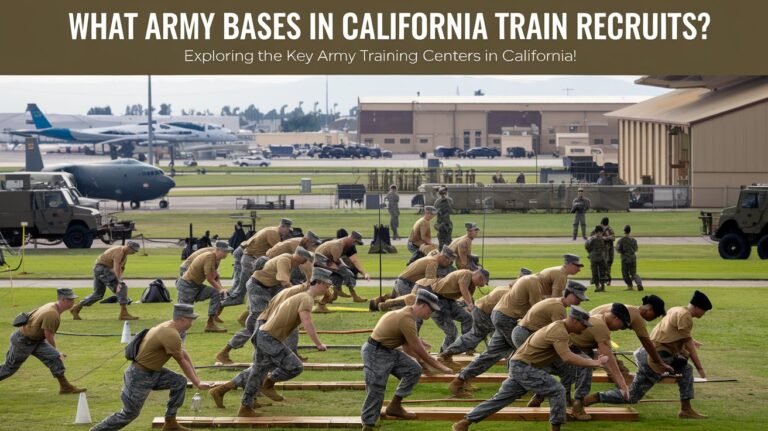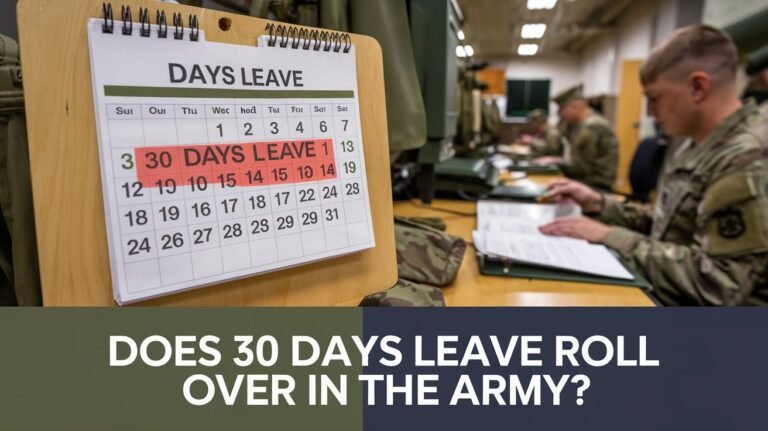Am I Veteran If I Served In The Army Reserves?
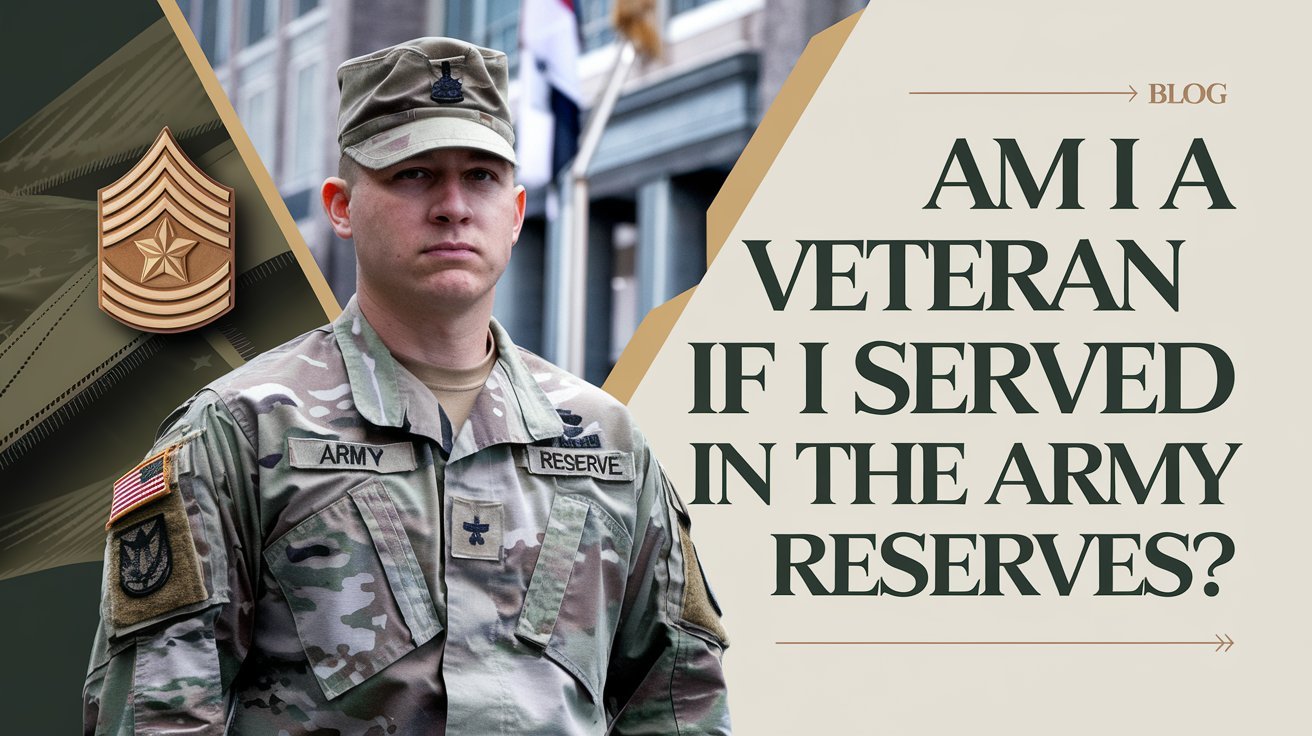
Serving in the Army Reserves is a special and often misunderstood way to serve in the military. Many ask, “Am I considered a veteran if I’ve served in the Reserves?” The answer isn’t simple. Your veteran status depends on how long you served and the reason for your discharge.
Let’s dive into the complex world of veteran status for Reserve members. We’ll look at the rules that might make you eligible for important benefits and protections.
Legal Definition of Veteran Status for Reserve Members
The laws about who is considered a veteran are found in Title 10 and Title 32 of the U.S. Code. Title 10 deals with active duty in the military. Title 32 is about full-time duty in the National Guard.
Qualifying Service Requirements
To be called a veteran, reserve members need to serve at least 180 days of active duty. This duty must be outside of regular training. Their discharge must not be dishonorable.
Discharge Conditions and Eligibility
Some people might be considered veterans even if they didn’t serve long. This includes those disabled by a disease or injury during duty or training. 13 CFR § 125.11 says that Reservists or National Guard members who were called up or got disabled qualify as veterans.
Federal Recognition Under Title 10 and Title 32
The law, 38 U.S.C. § 101(2), defines a veteran as someone who served and got a non-dishonorable discharge. Serving full-time, as outlined in the rules, counts as active duty for veteran status.
| Veteran Status Criteria | Eligibility Details |
|---|---|
| Minimum Service Duration | 180 days of federal active duty service outside of training |
| Discharge Conditions | Under circumstances other than dishonorable |
| Disability Eligibility | Disabled from a disease or injury incurred or aggravated in the line of duty, even during training |
Am I Veteran If I Served in the Army Reserves
Figuring out if you’re a veteran if you served in the Army Reserves can be tricky. It depends on the type and length of your service. Just doing weekend drills and annual training usually doesn’t make you a veteran.
But, there are some situations where Army Reservists might be seen as veterans:
- If you were called to federal active duty for at least 180 days outside of training periods.
- If you got hurt or sick while serving and it left you disabled.
- If you have 20 or more years of reserve service, making you a retiree as of 2016.
In these cases, the U.S. Department of Veterans Affairs (VA) might see you as a veteran. This means you could get some benefits and protections. Getting your veteran status confirmed can be complex, so it’s smart to ask the VA, a VSO, or an attorney for help.
Remember, just being a drilling reservist doesn’t automatically make you a veteran under federal law. Your service details and discharge status will decide if you’re a veteran for VA benefits and other programs.
Active Duty Service Requirements for Reserve Personnel
To become a veteran, weekend warrior veterans and inactive ready reserve veterans need 180 days of active duty. This time must be outside of regular training. It’s important to know this, as it shows who has really been on missions.
Federal Orders vs. State Orders
There’s a big difference between federal and state orders. Federal orders (Title 10) count towards veteran status. But state orders (State Active Duty) do not. It’s key for reservists to know this to figure out if they qualify.
Training Period Considerations
Training periods don’t usually count towards veteran status. This includes initial training, monthly drills, and annual training. But, if someone got hurt during training, they might still qualify.
“Veterans who served in combat or during a war on foreign soil may be entitled to additional benefits compared to those who did not experience combat.”
The U.S. Department of Veterans Affairs (VA) looks at each case carefully. They decide if someone’s service counts as a veteran. Knowing these details helps reservists get the benefits they deserve.
Reserve Component Categories and Service Types
The U.S. military’s reserve components are key to national defense. They include the Army Reserve, Navy Reserve, Marine Corps Reserve, Air Force Reserve, Coast Guard Reserve, Army National Guard, and Air National Guard. Each has its own service types, affecting veteran status and benefits.
Traditional Reservists (TR) drill one weekend a month and do two weeks of annual training. Active Guard and Reserve (AGR) members serve full-time. Individual Mobilization Augmentees (IMAs) train and serve to support active-duty forces. The Individual Ready Reserve (IRR) is for those who’ve finished their initial service but still belong to the reserve.
| Reserve Component | Service Type | Description |
|---|---|---|
| Army Reserve | Traditional Reservist (TR) | Drill one weekend per month and complete two weeks of annual training. |
| Navy Reserve | Active Guard and Reserve (AGR) | Serve full-time in support of the reserve component. |
| Marine Corps Reserve | Individual Mobilization Augmentee (IMA) | Train and serve on an individual basis to augment active-duty forces. |
| Air Force Reserve | Individual Ready Reserve (IRR) | Individuals who have finished their initial active-duty or drill requirements but remain part of the larger reserve system. |
| Coast Guard Reserve | N/A | The Coast Guard Reserve operates under a different structure than other military branches. |
| Army National Guard | N/A | The National Guard serves both at the state and federal government levels. |
| Air National Guard | N/A | The Air National Guard serves both at the state and federal government levels. |
It’s important to know about reserve component categories and service types. This knowledge helps determine veteran status and access to military benefits. Your specific service, whether as a Traditional Reservist, Active Guard and Reserve, or another role, affects your eligibility for various programs and entitlements.
National Guard and Reserve Retirement Benefits
Service members in the Army Reserves or National Guard may get retirement benefits, even without federal active duty. These benefits honor their commitment and help army reserve and national guard veterans.
20-Year Service Recognition
Since 2016, those with 20 qualifying years of service in the National Guard or Reserve get retirement benefits. This milestone shows their dedication and service to the nation.
Retirement Points System
- The retirement system for National Guard and Reserve members is based on a points system. They earn points for active duty, drills, and training.
- These points help figure out retirement pay and eligibility for benefits like the VA Home Loan and Post-9/11 GI Bill.
- To get retired pay, soldiers need 50 retirement points per year. For non-regular retirement with 20 years, they need 1,000 points.
| Retirement Benefit | Eligibility Criteria |
|---|---|
| VA Home Loan | 6 years of service in the Selected Reserve or 90 days of active duty (Title 10) during a wartime period |
| Post-9/11 GI Bill | At least 90 aggregate days of active service after September 10, 2001, or discharged with a service-connected disability after serving at least 30 consecutive days |
| Servicemembers’ Group Life Insurance (SGLI) | Scheduled to perform at least 12 periods of inactive duty training per year |
| Disability Benefits | Service-connected disability, including Automobile Allowance, Clothing Allowance, and Specially Adapted Housing (SAH) or Special Home Adaptation (SHA) Grant |
Understanding army reserve and national guard veteran benefits helps service members get the recognition they deserve. This ensures they receive the support they’ve earned through their service.
Federal Active Duty Qualifications
Getting veteran status can be different for those in the reserve. It depends on if they were under federal or state orders. To be called a reserve component veteran, they must have at least 180 days of federal orders service. This is outside of regular training times.
Being on federal active duty means serving under Title 10 orders. This includes going on deployments, mobilizations, and some full-time duties. On the other hand, state orders from a governor don’t count for federal veteran status. It’s crucial for reservists to know the difference. This affects their eligibility for veteran benefits and recognition.
| Federal Orders | State Orders |
|---|---|
| Deployments, mobilizations, and certain full-time duty | Issued by state governor, do not count towards federal veteran status |
| Serve at least 180 days to qualify as a reserve component veteran | Do not contribute to federal veteran status |
Knowing about federal active duty rules helps reservists understand their veteran status. This knowledge lets them get the benefits and protections they deserve for their military service.
Disabled Veterans Status for Reservists
Serving in the Army Reserves has its own rules for getting disabled veteran status. Reservists can get this status if they get hurt or make a condition worse during their duty or training. This is true even if they’ve been in for less than 180 days.
Service-Connected Disabilities During Training
Reservists who get hurt or sick during training might get disability pay from the Department of Veterans Affairs (VA). This is for injuries or illnesses that happen because of their reserve duty. It doesn’t matter how long they were active.
Medical Retirement Options
If a reservist can’t keep serving because of a disability, they might get medical retirement. This means they could get VA disability pay and other benefits like healthcare and education help. Getting medical retirement can be tricky, so it’s best to talk to your unit’s personnel office for advice.
| Benefit | Details |
|---|---|
| Disability Compensation | Reservists with service-connected disabilities may receive monthly payments from the VA based on the severity of their condition. |
| Medical Retirement | Reservists who become medically unfit for continued service due to a service-connected disability may be eligible for medical retirement, providing them with VA disability compensation and other veterans’ benefits. |
| Assistance and Information | Reservists can call the VA’s toll-free numbers to get help with their disability claims, healthcare, education benefits, and life insurance inquiries. |
Knowing what you’re eligible for and the benefits you can get helps reservists with disabilities. This way, they can make sure they get the support and pay they deserve for their military service.
Reserve Service Documentation Requirements
Reservists need to show their veteran status with official documents like the DD-214 form. This form details your military service’s length and character. The needed documents can change based on your service’s type and duration.
For short active duty stints under 180 days, you might need more proof. This is to show your service wasn’t just for training. National Guard members should have the NGB Form 22. Those with 20 years of qualifying service need retirement point statements.
The DD-214’s criteria have changed, mainly with the Global War on Terror. Now, veterans can see their records and DD-214 online through VA eBenefits. This makes getting your documents easier.
The DD Form 214’s eligibility depends on consecutive active duty of 90 days or more. Drill status breaks this requirement, starting the count again. But, active duty in support of a named operation or mobilization can lower this to 30 days.
Retirement DD Form 214s are made at HQ ARPC for those drawing retirement pay right away. They must have 20 years of active service and stay on duty until their last day. It’s key to ask for your DD Form 214 while leaving the military, due to a time limit.
Employment Rights and Protections for Reservists
The Uniformed Services Employment and Reemployment Rights Act (USERRA) protects the jobs of those in the U.S. military, like reservists. It ensures that those returning from service can get back to their old job with the same benefits.
USERRA Provisions
USERRA covers almost all employers, big or small, even the federal government. It gives job protection to those who have been away due to military service. This includes the Army, Navy, Marine Corps, Air Force, Coast Guard, reserves, and National Guard.
USERRA says you can’t be away from work for more than five years. But, some types of service, like training, don’t count towards this limit. Losing your rights can happen if you get a dishonorable discharge or other than honorable conditions.
State-Specific Legal Protections
Many states also have laws to protect reservists and National Guard members. For example, New York has strong laws for those working for state and local agencies.
Employers must tell employees about their USERRA rights and what they need to do. The U.S. Department of Labor’s Veterans Employment and Training Service (VETS) helps employers understand and follow USERRA.
| USERRA Key Provisions | Details |
|---|---|
| Reemployment Rights | Guarantees the right to be reemployed at the former job with the same benefits |
| Employer Coverage | Applies to virtually all employers, including the federal government |
| Service Limitations | Cumulative service cannot exceed 5 years, with 8 exempted categories |
| Discharge Conditions | Individuals may lose USERRA rights with dishonorable or other than honorable discharge |
| State-Specific Protections | Many states offer enhanced legal protections for reservists and National Guard members |
Different Types of Military Orders and Veteran Status
Figuring out if you’re a veteran can be tricky, even for those in the military reserves. The kind of military orders you follow can really affect your veteran benefits. It’s key for reservists to know about these orders to get the benefits they deserve.
Federal Active Duty Orders (Title 10)
Being on Title 10 federal orders usually means you’re a veteran. This includes times when you’re deployed or doing full-time military work. If you’re in the reserves and serve on Title 10 orders for 180 days or more, you’re likely seen as a veteran.
National Guard Duty (Title 32)
But, serving in the National Guard under Title 32 orders can be different. You need to have been called to federal service, like for emergencies. Just regular training or state missions don’t count.
State Active Duty
When National Guard or reserve members are called for state emergencies, they’re on State Active Duty (SAD). This doesn’t make you a federal veteran, but you might get state benefits.
| Order Type | Eligibility for Federal Veteran Status |
|---|---|
| Title 10 Federal Active Duty | Generally qualifies for veteran status |
| Title 32 National Guard Duty | May qualify if called to federal service |
| State Active Duty | Does not qualify for federal veteran status |
It’s vital for military reservists to grasp the details of their service. Knowing the type of orders they’ve followed helps figure out their veteran benefits. Talking to veteran groups or the Department of Veterans Affairs can help make sure you get the recognition you’ve earned.
State Active Duty vs Federal Service Recognition
Understanding the difference between state active duty (SAD) and federal service recognition is key. SAD is used to mobilize National Guard and militia for state emergencies. This includes natural disasters or civil unrest. Yet, this service does not count towards federal veteran status or VA benefits.
On the other hand, federal service recognition is crucial for being considered a veteran under federal law. This applies to those with qualifying federal service. They are eligible for VA healthcare, education assistance, and employment rights.
It’s vital for reservists to know this difference. They must ensure they have the necessary federal service recognition. By grasping the state and federal military service nuances, reservists can better navigate veteran benefits. They can ensure they receive the recognition and support they’ve earned for their service.
Common Concerns
What is the legal definition of veteran status for reserve members?
A veteran is someone who served in the military and got out honorably. Reserve and National Guard members can be veterans too. They must have served 180 days on active duty or been disabled from an injury during service.
How is federal recognition for veteran status governed?
Federal recognition comes from Title 10 and Title 32 of the U.S. Code. Title 10 is for active duty, and Title 32 is for some National Guard duties. To be a veteran, you need 180 days of active duty and a honorable discharge.
Am I considered a veteran if I served in the Army Reserves?
Being a veteran in the Army Reserves depends on your service. Just weekend drills and annual training don’t make you a veteran. But, if you served 180 days on active duty or got disabled, you might be considered a veteran.
What are the active duty service requirements for reserve personnel to be considered a veteran?
You need 180 days of active duty to be a veteran. This duty must be under federal orders, not state ones. Training periods don’t count unless you got disabled during them.
What are the different reserve component categories and service types?
There are many reserve groups, like the Army Reserve and Air National Guard. Each has its own rules for veteran status and benefits. Service types include Traditional Reservist and Active Guard and Reserve.
How does the National Guard and Reserve retirement system work?
Since 2016, National Guard and Reserve members with 20 years of service can retire. They are considered veterans, even without federal active duty. The system uses points for service to figure out retirement pay and benefits.
What types of military orders count towards veteran status?
Orders under Title 10 count towards veteran status. This includes deployments and full-time duty. But, state orders don’t count. You need 180 days of Title 10 orders to be a veteran.
Can reservists qualify for disabled veteran status?
Yes, reservists can get disabled veteran status. This is for injuries or diseases from service, even with less than 180 days of service. They might get VA disability and other benefits.
What documentation is required to verify reserve member veteran status?
You’ll need a DD-214 form to prove your service. For less than 180 days, you might need more proof. Also, NGB Form 22 and retirement points statements are important for some veterans.
What employment rights and protections do reservists have?
The Uniformed Services Employment and Reemployment Rights Act (USERRA) protects reservists. It ensures they can go back to their jobs after service. Many states also offer extra protections for reservists.
What is the difference between State Active Duty and federal service recognition?
State Active Duty (SAD) is for state emergencies. It doesn’t count for federal veteran status. Federal service, under Title 10 or certain Title 32 orders, is needed for federal veteran status.

